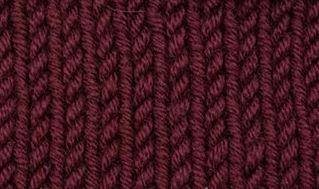Once
a week I post interviews with interesting people about their insights
on their experience of working in the Knitting industry. I’ve noticed
that every one of these individuals makes their living in a slightly
different manner bringing their own unique presence to the knitting
world.
You can find Kristin here and here on Ravelry. Here are her other social media links:
Where do you find inspiration?
I
draw inspiration from the world around me, everything from the
traditional fashion magazines and runway looks to floor tiles and park
benches.
What is your favourite knitting technique?
I
enjoy knitting lace or slipped stitches. Not only do I enjoy keeping
something interesting on my needles, but I love the finished results.
Texture is definitely a favorite of mine!
Do you look at other designers’ work or are you afraid that you will be influenced by their designs?
While
I do have my favorite designers and it's impossible to avoid other knit
creations entirely, I do try to stay away from knit designers because I
don't want to inadvertently copy someone else's designs.
How many sample/test knitters do you have working for you or do you do it all yourself?
I
love drawing from my followers, especially on Instagram, for test
knitters. I don't have anyone that I regularly employ, but I try to have
at least 3 test knitters for each project. I haven't used any sample
knitters, but that will probably change this year.
Did you do a formal business plan?
I
don't have a formal business plan because I want my business to be able
to grow and change as I do, but I do have a general plan that's open.
This year I'm following the 12 Week Year so my business plan is even shorter than normal!
Do you have a mentor?
I don't have a formal mentor, but I do have other designers and knitters that I admire and look to for guidance.
Do you use a tech editor?
I
do use a tech editor. While I don't mind the math and grading for 7
sizes, it can be really easy to overlook something with all those
numbers!
How do you maintain your life/work balance?
In
the mornings I meditate and journal with my coffee. It keeps me sane,
helps me focus, and allows me not to get overwhelmed by my thoughts or
even general anxiety with trying to do everything at once. I also plan
things out in advance, and I break tasks down into tiny steps so that I
can easily accomplish everything. Lastly, I keep track of everything
that's been done so I can celebrate it. It's really easy to get lost in
the moment of trying to do everything without realizing how much I've
done in order to get to that point.
How do you deal with criticism?
Besides
denial and general dismay? ;) I have to be in the right space to handle
criticism so I make sure I'm in a good mood first. Then I carefully
break it down. Sometimes the criticism is valid, and I incorporate
changes into my work. Sometimes it's not valid and is merely a differing
of opinion, in which case I dismiss it.
How long did it take for you to be able to support yourself?
To
be able to support yourself, you need consistent products and fans to
purchase the products. I wasn't producing patterns regularly until
perhaps a year and a half ago, and so while I had fans and income prior
to that, I wasn't able to live off of it because I wasn't treating it as
a business, but rather a hobby that occasionally made money.
What advice would you give someone who wants to pursue a career in knitting?
If
you want to have a successful career in knitting, treat it like a
career. Whether you want to partner with companies or do everything
solo, you have to know what your options are and put time and energy
into it. Enjoying knitting and enjoying pattern writing aren't enough;
it is a business.
What’s next for you?
We're
only in March, and this year is shaping up to be wonderful! Currently
I'm working on quite a few patterns, some for self-publication, others
for magazines, and still more for a yarn store in New Zealand. I'm
co-hosting a weekly podcast on business in the fashion, accessory, and
beauty industries at FAB Entrepreneurs, and I'm in talks for developing a new line of knitwear.

















































